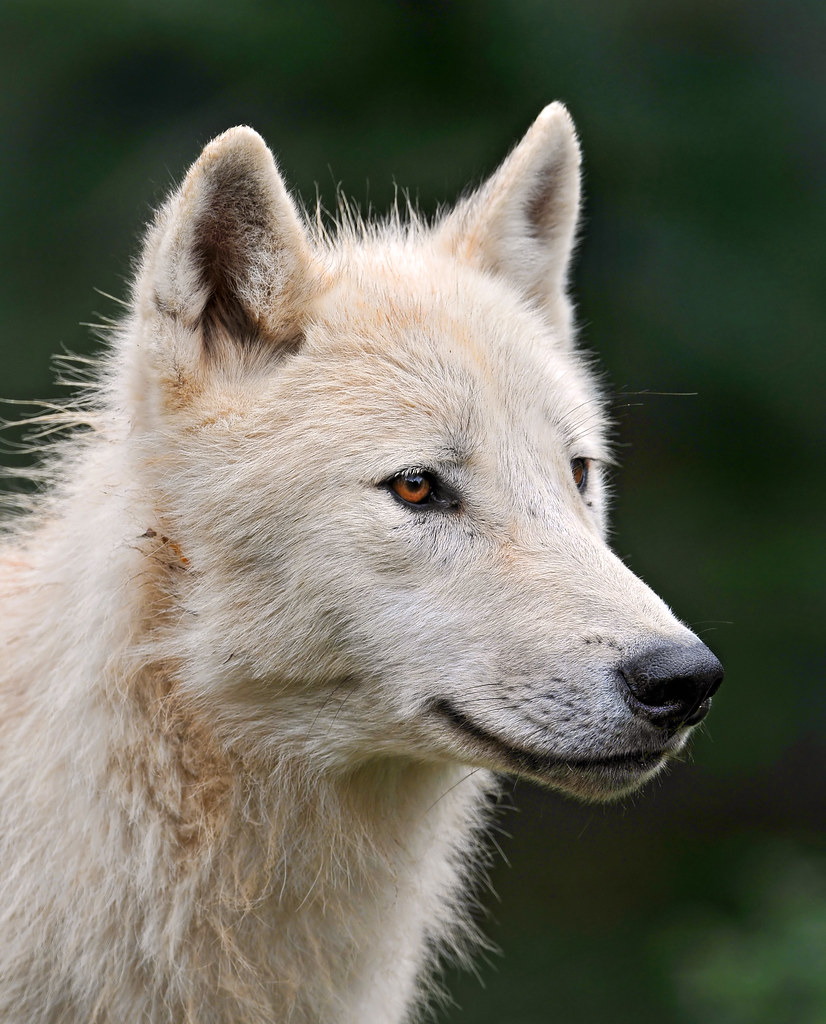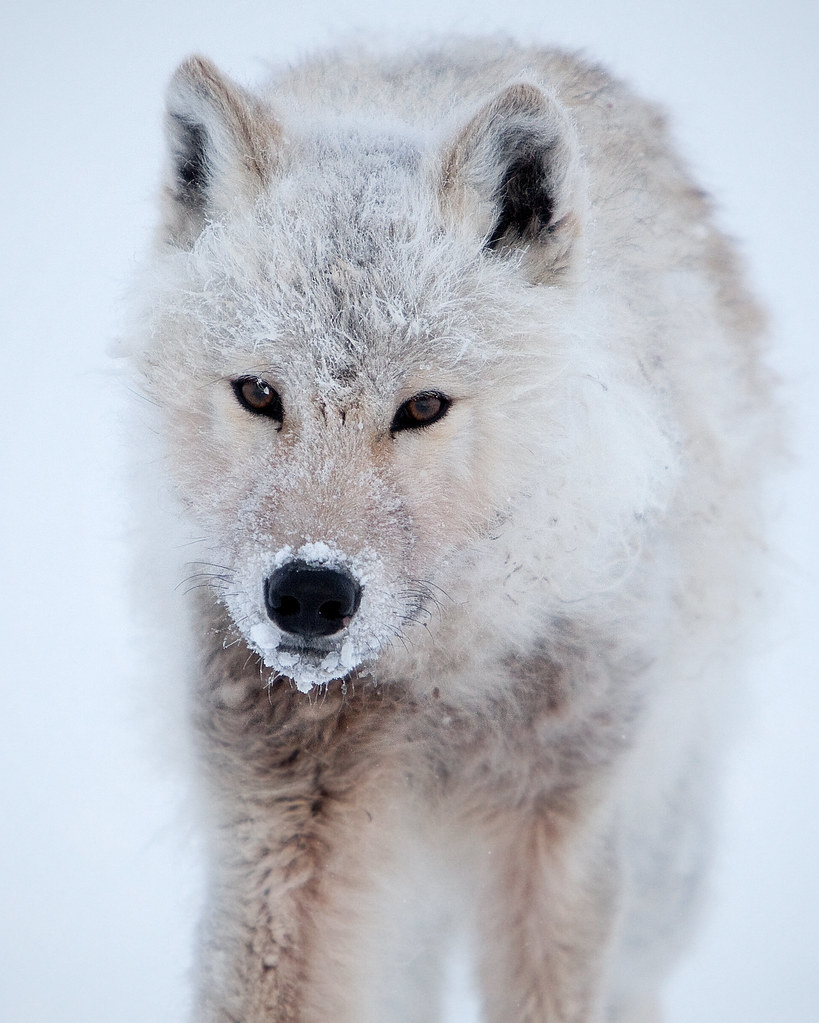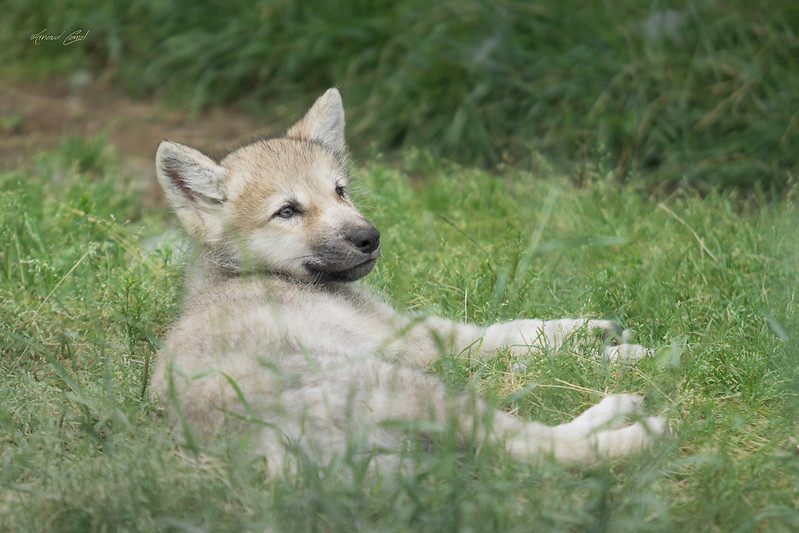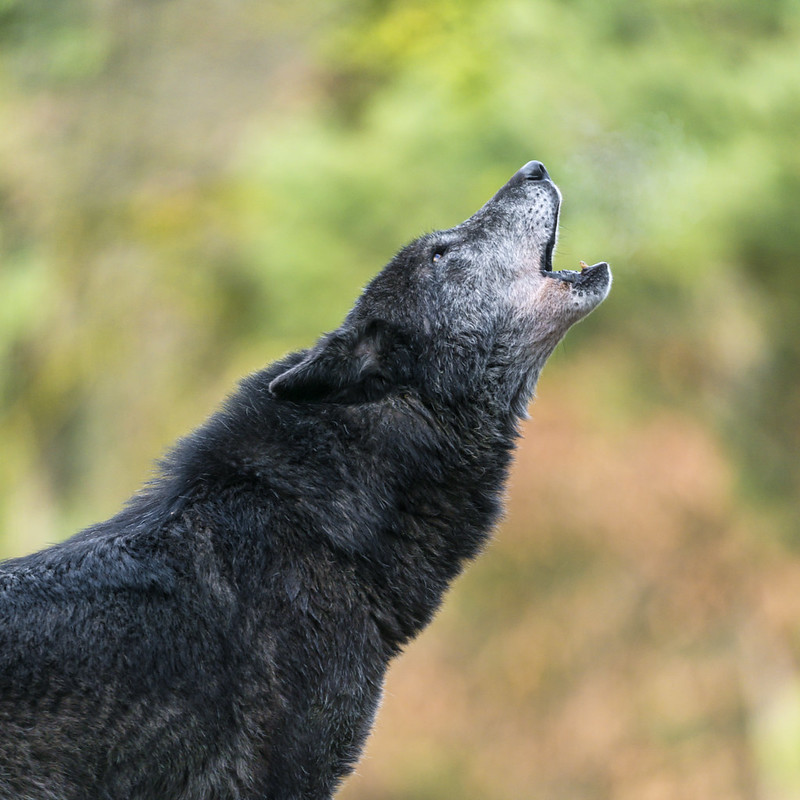Yellowstone Wolf Update-
By Kathie Lynch
Late summer wolf watching in Yellowstone’s Northern Range was all
about the Lamar Canyon pack. Except for some distant sightings of the
Prospect Peak pack at the end of July and a very brief (but exciting!)
appearance by the Junction Butte pack, watchers stayed glued to the
Lamar Canyon’s traditional den forest area in Soda Butte Valley.
The five new Lamar Canyon pups were first sighted in mid-July. These
much-hoped-for pups are the last offspring of the late Lamar Canyon
alpha, 925M, who was killed by the Prospect Peak pack in March.
In a strange turn of events, four adult males from that pack then
joined Lamar Canyon alpha 926F and are now helping to raise the pups. It
is indeed a lucky thing that all wolves love puppies, and even adult
males will willingly adopt pups sired by others.
The 12-member Lamar Canyon pack now includes alpha 926F (black), her
two black yearling daughters, the four former Prospect Peak pack big
males (new alpha “Twin,” gray 965M, black “Mottled,” and “Dark Black”), 3
gray pups and 2 black pups.
We were very lucky to have many (or at least some) of them in view
almost every day. It was like having a window into their world as we
watched the pups (who had been born about April 27) grow from 2.5 to 4
months old. It was a great privilege to be able to share some of the
amazing experiences in a wolf pup’s life.
Very early on they started attempting to follow when the adults left
to go out on a hunt. It was quite nerve-wracking to watch as the pups at
times came down toward the road, which was filled with speeding cars
and motorcycles.
One time we found small puppy paw prints etched in the frost on the
footbridge, so we knew that they were likely out on exploratory missions
(and had even crossed the road!) when we weren’t watching.
The biggest surprise was when a black female pup apparently crossed
the road without being noticed and went on a solo 3-hour walkabout! She
suddenly materialized near the hill behind all of the watchers who had
been looking in the opposite direction for wolves at the den forest!
We thought that the pup was perhaps scent-trailing an adult who had
left on a hunt earlier, but she seemed to be having a good time just
being out on her own. She made a big circle around us, poked around in
the marsh along Soda Butte Creek, nonchalantly walked across the creek,
and finally safely crossed the road to head back home to the den forest.
It seemed pretty obvious that she knew the area well and had probably
done the same thing before.
The adults have had to work hard to find food to bring home to the
pups. The longer the hunters are gone, the more quiet the pups become,
sort of like the Energizer Bunny winding down. When the adults do
return, all of the pups rush to mob them, soliciting a regurgitation by
licking the muzzle of the incoming adult. It’s amusing to watch as the
adult plows forward through a wriggling sea of begging pups.
Sometimes, the adults don’t return for 3-5 days, though they usually
leave at least one baby-sitter with the pups. Yearlings are almost
always ready to babysit. But, surprisingly, most of the new adult males
also seem happy to do the job.
The big (120 pound!) gray 965M is especially tolerant and playful
with the pups. He lets them climb all over him and will play with them
by grabbing onto a stick to trying to wrestle it away from them. I have
seen gentle giant 965M proudly lead a pup parade and then settle down to
keep an eye on them while they play in the marsh or visit the pond.
The “Dark Black” male also plays the role of good shepherd. He may
lead the pups to a nearby carcass area where they can find some tasty
bones to gnaw on while waiting for the hunters to return. “Dark Black”
keeps an eye out for danger (bears) and may relax in the shade of a
tree, much like a parent watching over kids at the playground.
The best fun occurs when the pups just stir things up on their own.
Left to their own devices, they play just about every game imaginable—it
is infinitely entertaining to watch! Favorite games include tug-o’-war
with two on a stick, prance around with three abreast on a long branch,
toss and catch a pinecone, pounce on something/anything, run rings
around a tree, mouth-wrestle, take down and stand over, chase, watch a
squirrel in a tree, stand on hind legs with front paws up on the tree to
try to reach that darn squirrel, dig a hole, and pull another pup’s
tail!
The oddest behavior we’ve noticed with these pups, though, is what
can only be described as an Army crawl. All five pups seem to be doing
it, and it’s funny to watch. They will just belly crawl forward from one
place to another as if that’s the only way to get from Point A to Point
B. One thought is that perhaps fleas are driving them crazy, and
they’ve found a novel way to scratch the itch. (We haven’t seen any sign
that the pups have mange.)
The four new males (from the Prospect Peak pack) take every
opportunity to get to know the three Lamar Canyon females (alpha 926F
and her two yearling daughters). None of these males is related to any
of these females, so it should be interesting in February when they will
all be eligible for breeding.
Alpha 926F seems content with her new alpha male, “Twin,” but the
other males (965M, “Mottled,” and “Dark Black”) take turns cozying up to
the two female yearlings. Almost any occasion seems right for a big
greeting, playful romp, and even some fanny dancing as they all get
acquainted.
One morning, 926F treated us to the most amazing howling serenade in
the pre-dawn darkness. It was probably the loudest howling I have ever
heard—and for good reason—she was standing right next to the road near
the turnout!
She quickly slipped across the road and headed south out to the
middle flats, presumably to take her usual path out toward Cache Creek.
What happened next was a crack up! She stopped at the Cache Creek trail
sign and marked it with a flex-leg urination (a variation of a raised
leg urination)—just like it was the neighborhood fire hydrant!
With nose to the ground, she went this way and that all around the
trail sign, looking for a message she could read. When she found it, she
changed her course and headed out toward the Lamar River instead of
Cache Creek. Soon we saw another black (possibly the “Dark Black” male)
follow her exact path, “read” the message she left on the signpost, make
his own mark, and then follow her lead!
The whole mystery of how they communicate with each other is really
fascinating. One evening, one of the black female yearlings sat under a
tree with one black pup, high on a hill to the east of the pack’s usual
rendezvous area. The yearling howled and howled. I thought at first that
she was calling the other pups to come to her. Instead, the one pup
with her went back home, and the yearling was then free to follow the
other adults out hunting.
On the morning of August 7, I bet the Lamar Canyon pack simply
couldn’t believe their good fortune when they discovered a dead bison
bull right in their own front yard! It was likely the victim of the rut
(perhaps gored by another bull) and had died in their rendezvous site.
For the next three days (until the bison carcass was totally
flattened and dragged away into a gully), we were treated to a real wild
nature show. At various times, we had seven grizzlies (including a sow
with two cubs of the year) and seven adult wolves feeding on the carcass
or badgering each other for control of it.
The pups mostly stayed away from the carcass due to the danger from
the bears. When the pups did approach the carcass, they seemed
interested, but wary. I never did see the pups actually feeding on the
carcass. Activity around the carcass kept the wolves and wolf watchers
entertained for the next 10 days to 2 weeks.
The big event for the Lamar Canyons happened in their own territory
on the morning of August 17 when they ran smack dab into five members of
the Junction Butte Pack! Some Lamar Canyon adults had crossed the road
to the south, presumably to go out hunting, and some pups had evidently
followed them.
The Lamar Canyons were up on the middle flats (south of Hitching
Post) when they encountered Junction Butte alpha 911M, big black beta
890M, 2-year-old females 907F and 969F, and an uncollared gray yearling
female. (Luckily, Junction Butte alpha 970F, who has been to the Lamar
Canyon den forest before, was not with them.)
The Lamar Canyons desperately tried to gather their pups as they saw
the Junction Buttes approaching. What ensued can only be described as
helter skelter, but the scary thing was that the Lamar Canyon pups ran
down into Soda Butte Creek and were pursued by all five Junction Buttes!
From our vantage point out on the trail south of Footbridge, we
couldn’t see what happened between the Junction Buttes and the Lamar
Canyon pups in the creek. But, somehow the pups made it out and safely
back across the road! We all breathed a huge sigh of relief when one
watcher spotted three gray pups streaking across the hillside on the way
home to their den forest.
Meanwhile, Lamar Canyon alpha 926F, one black female yearling, and
965M zigzagged through the rolling hills south of Hitching Post, crossed
the road, and ran right past their rendezvous site. They kept on
running to the east past Soda Butte Cone, crossed the road again, and
fled up to the safety of a high meadow (way above last year’s rendezvous
site).
Next, we discovered that alpha male “Twin” had somehow circled around
to a low bench behind us! He howled and howled before heading east to
join 926F, the yearling and 965M in the high meadow.
Then “Dark Black” appeared near the seedling forest on the flank of
Mt. Norris, west of where “Twin” had been. “Dark Black,” too, headed
east, presumably to join the other adults in the high meadow.
All this time, adult male “Mottled” had most likely stayed on the
north side of the road and was seen returning to the den forest area.
The other black female yearling was most likely there too, so that was
good for the returning pups.
At some point (probably soon after the pups had escaped with their
lives), the five Junction Buttes had retreated to the west. As far as we
know, no contact had been made between the two packs and no harm had
been done.
The next morning, I was somewhat worried because I only heard one
faint adult howl from the den forest. But, later in the day, other
watchers saw all 12 Lamar Canyon wolves safe in their home site, so all
ended well.
Other than that encounter, the Junction Butte wolves have remained
elusive in the late summer. As far as I know, no one has actually seen
any of their pups this year, although they did localize and are presumed
to have denned. Some of them have been up high on the Buffalo Plateau
and the Mirror Plateau, both great places to find elk in the hot summer
months. But, these are not good places for watchers to see them.
The Prospect Peak pack has also been elusive most of this summer. At
the end of July, we had a few days of sightings around their den forest
on the vast Blacktail Plateau, but then they moved really far away to
the south and west and were not seen much.
However, one day we did get to see the Prospect Peak adult black
female and three gray yearlings lead all five pups on a rollicking romp
to the west. They all ran along jumping on each other and just generally
enjoying the pups’ big adventure.
Alphas 763M and 821F are now in their second year of leading the
Prospect Peak pack. The other pack members include the black adult
female, four gray yearlings (964M and 966M—both of 8 Mile pack
heritage—and two females who were born to Prospect Peak), 2 black
yearlings (1 female Prospect Peak, 1 male 8 Mile), and 5 pups (3 black, 2
gray). (The Prospect Peak pack picked up some 8 Mile pack members last
November after the 8 Mile alpha, 871M, was killed by the Cougar Creek
pack.)
Meanwhile, down in Yellowstone’s Interior, life has been good for
7-year-old former Lamar Canyon alpha 755M and his new Wapiti Lake pack.
He and his mate, the 5-year-old very light gray (almost white) Canyon
female, produced four pups (2 black, 2 gray). The pack continues to live
in the old Canyon pack’s Sour Creek rendezvous site in Hayden Valley.
Although they are not seen every day, many watchers have been able to
enjoy some really great viewing opportunities. One hot summer afternoon
(when you really wouldn’t expect any activity), I happened to see the
alpha female chase a mule deer doe into the forest. The hunt must have
been unsuccessful because the wolf reappeared several minutes later and
continued her trek across the open flats as though nothing had happened.
Alpha 755M was the star of the show on at least two other occasions
when he brought down an elk all by himself. (He certainly must have
learned some valuable lessons from his late, great mate, the Lamar
Canyon “’06 Female.”) He handled himself with authority as he chased a
grizzly away from the carcass, providing great viewing for watchers
lining the roadside just west of Canyon Junction.
On another day, 755M and his alpha female chased an elk calf into the
Yellowstone River near Alum Creek. The calf swam and waded back and
forth from bank to bank to avoid the wolves whenever they entered the
water.
The alpha female spent most of the time bedded behind sage on the
high bank so she could keep an eye on the calf in the river. It was
amazing to see her consider just how to get that calf. I felt like I
could almost see the wheels turning in her head!
A few times, while lying down, she would go into stalking mode and
then silently slide down the bank to make a rush at the calf. In the
end, though, both wolves bedded out of sight in the tree line and the
calf simply walked away!
The Wapiti Lake alpha female’s parents, 712M and the white female,
have remained away from Hayden Valley all summer. They have evidently
found a new home to the west, between Norris and Old Faithful, and they
may even have pups there. Both alphas are now 10-years-old. If they do
have pups this year, this would be their eighth litter together!
We did have some unusual wildlife sightings recently. One day a man
asked me what the “white things” were near the Lamar Canyon’s den
forest. My answer (“probably pronghorn butts”) turned out to be way off
the mark—a look through the spotting scope clearly showed two mountain
goats!
Another morning, after a torrential rainstorm the night before, we
found that it was a fine time for blotched tiger salamanders to be on
the move. They’re the only kind of salamander in Yellowstone, and I
actually saw five different ones that morning!
Not all of the unusual sightings had to do with wildlife. One gray,
foggy morning as we waited for the fog to clear so we could look for the
Lamar Canyon wolves, an amazing sight appeared—a fogbow (also called a
white rainbow, seadog, or fogdog)! It is produced by sunlight shining on
fog and does look exactly like a white rainbow!
As August draws to a close, it is already beginning to feel like
early fall in Yellowstone. Several mornings have been below freezing,
the wildflowers are long gone, and some leaves are turning red.
The bison rut will be winding down (good news for drivers trying to
negotiate bison jams!), and the elk rut will start soon. When the first
snows in mid-September bring the elk down from the high meadows, things
should improve for the adult wolves who have worked so hard all summer
to ferry food to the pups.
The Lamar Canyon pack has found a way to survive despite the
devastating loss of alpha male 925M last March. No one could have
predicted that those four big Prospect Peak males would come to the
rescue and fit in so well.
The whole unlikely story speaks volumes about the tenacity and
resilience of wolves. They have evolved a system to ensure that the pack
will survive and that the legacies of the great ones who have gone
before will live on.
source






![[All Images: courtesy Creative Action Network]](https://wolvesofdouglascountywisconsin.files.wordpress.com/2015/08/3050371-slide-21-document-name-this-art-campaign-is-rebranding-the-big-bad.jpg?w=225&h=300)
![[All Images: courtesy Creative Action Network]](https://wolvesofdouglascountywisconsin.files.wordpress.com/2015/08/rolling-in-the-snow.jpg?w=225&h=300)
![[All Images: courtesy Creative Action Network]](https://wolvesofdouglascountywisconsin.files.wordpress.com/2015/08/3050371-slide-4-document-name-this-art-campaign-is-rebranding-the-big-bajoin-the-pack.jpg?w=113&h=150)



